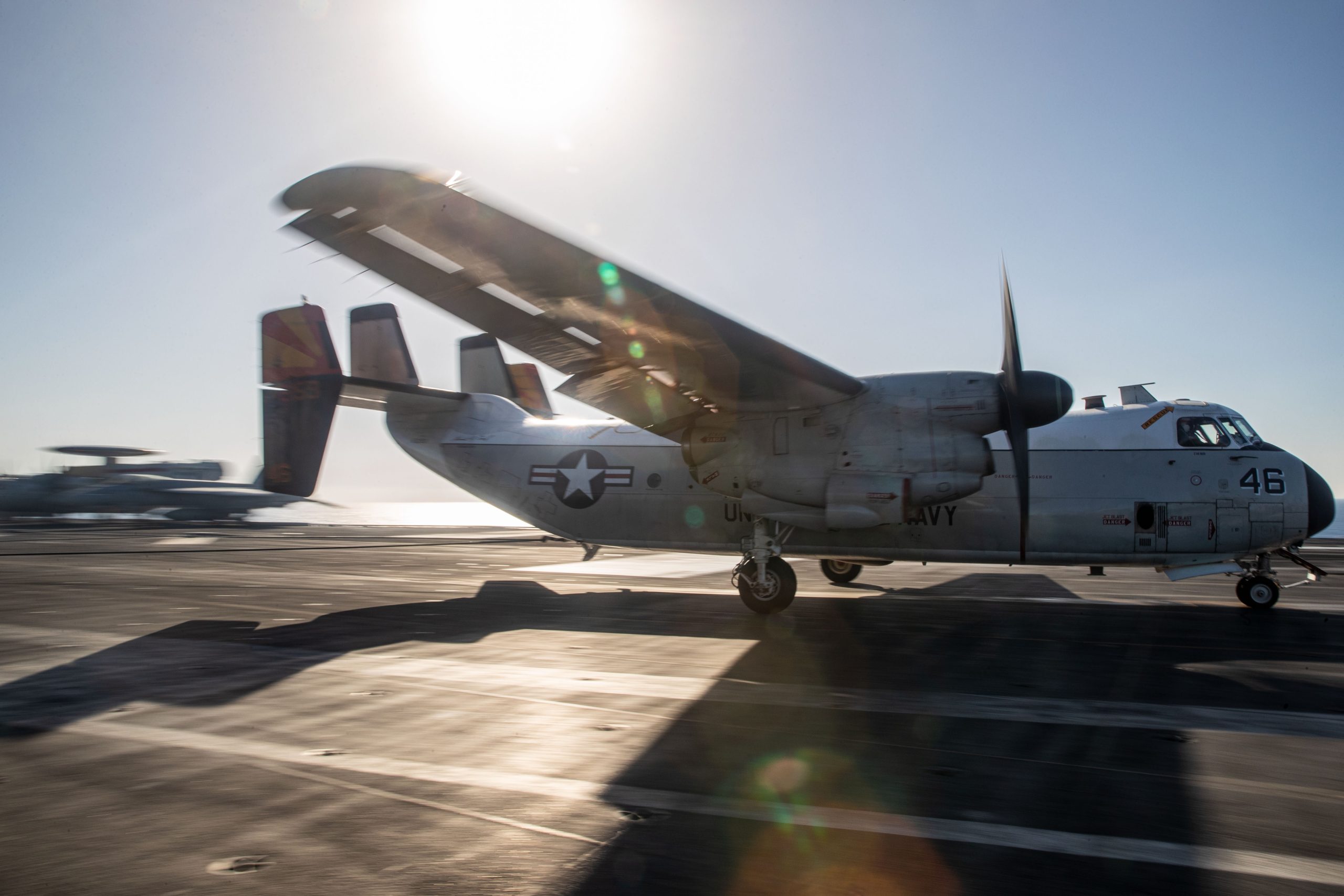SAN DIEGO – The uncertainty of the return of the V-22 tiltrotor to full operations is prompting the Navy to rethink its plans on how it resupplies its fleet of aircraft carriers in the short term with more uncertainty in the long term, the head of U.S. naval aviation said on Tuesday.
The service initially planned to retire its remaining 15 remaining C-2A Greyhound carrier onboard delivery aircraft over the next two years and replace them with a total of 38 CMV-22B Ospreys.
“Lucky for the Navy the C-2 Greyhound is still available,” Air Boss Vice Adm. Daniel Cheever said in a panel at the WEST 2024 conference, co-hosted by the U.S. Naval Institute and AFCEA.
“Limited operational impacts at this point but there are still operational impacts. And as you look into the future, significant operational impacts.”
As part of the planned retirement for the Greyhounds, the Navy has stopped training new C-2 pilots and has begun to wind down spares and logistic support for the 60-year-old design.
That transition, completed on the West Coast, is now stalled with the grounding of the V-22 across the Marines, Navy and Air Force following the crash off an Air Force Special Operations MV-22 off the coast of Japan late last year.
As of Tuesday, the Ospreys have been out of operation for 69 days with no indication how long the grounding could continue.
The grounding force the Navy to swap out the V-22s aboard West Coast carriers USS Carl Vinson (CVN-70) and USS Theodore Roosevelt (CVN- 71) with C-2As the East Coast “Rawhides” of Fleet Logistics Support (VRC) 40.
“VRC-40 is currently surging to meet the [COD] mission for deployed aircraft carriers in U.S. 5th and 7th Fleets,” reads a statement from Naval Air Forces provided to USNI News this week.
“There has been no change on the planned 2026 sundown of the C-2A.”
While there is no change in plan for the C-2s yet, there is little indication from any of the services how long the V-22s could remain out of service. Following initial grounding of the fleet there has been very limited information on the underlying cause for the grounding outside of a “potential material failure.”
For the Marines, the situation is more dire, Lt. Karsten Heckl said during the panel. He said operations for the Japan-based 31st Marine Expeditionary Unit, the 26th MEU deployed on the Bataan Amphibious Ready Group and the 15th MEU preparing to deploy aboard the Boxer ARG have seen, “dramatic impacts.”
Marine officials have told USNI News that Marines are allowed to use Ospreys deployed aboard the Bataan ARG in specific emergency situations. A prime mission for the 26th MEU, currently deployed in the Eastern Mediterranean is the non-combatant evacuation of Lebanon, USNI News understands.
Last month, Assistant Commandant of the Marine Corps Gen. Chris Mahoney said the service risks losing proficiency with the aircraft the longer their grounded.
“At some point, if a pilot doesn’t fly if a maintainer doesn’t turn a wrench, if an observer or crew chief isn’t plying their trade it becomes a competence issue and then there’s a safety issue,” he said.














No comments:
Post a Comment
How did you like the post, leave a comment. I would appreciate hearing from you all. Best wishes from JC's Naval, Maritime and Military News